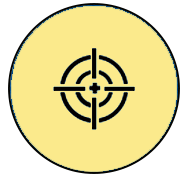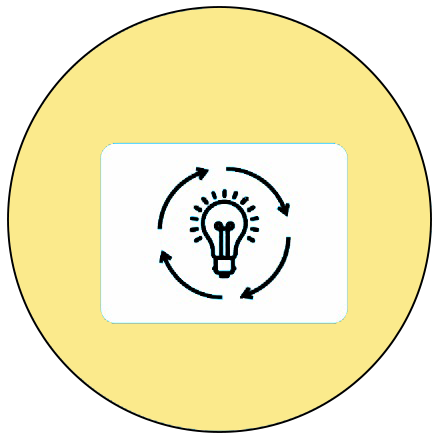
Numbers 500 to 999
Week 2
Learning Outcome
Recognises, reads, forms, and writes number names and numerals up to 1000 using the place value concept.
 Objective
Objective
Children will be able to count, read, and write number name from 500 to 999.
 Prerequisites
Prerequisites
- Children can say the numbers up to 999.
- Children will write numbers up to 500.
 Pre-teach Vocabulary
Pre-teach Vocabulary
Children should be familiar with the terms such as add, plus, equal to, places, after, and before.
Introduction
Materials required:
- Flashcards with number names from 500 to 999
- Abacus
- A ball
- Recorded music
- Notebook
Introduction:
- The teacher could begin by reviewing the reading of number names from 100 to 500 with the class.
- Children will sit in a circle. One child will have a ball. The teacher will play a piece of music, and the children will pass the ball to the child sitting next to him or her. When the teacher stops the music, they have to stop passing the ball, and the one who has the ball will be asked the question by showing the flashcard with a number name. Once the child identifies and writes the number in the notebook or on the blackboard, the music will be played again to pass the ball, and the same procedure is repeated.
- Another variation can be brought in by showing the flashcard with the number and asking the child to write the number name in the notebook or on the blackboard.
Read and write the numbers:
I Do (Teacher Models)

- Show a large demonstration abacus or display a digital abacus if available.
- Introduce the structure: ‘Each rod stands for a place—this one is Hundreds, this one is Tens, and this one is Ones’.
- Take a number card (e.g., 545) and say the number aloud.
- Model placing the beads:
- Slide 5 beads on the hundreds rod
- 4 beads on the tens rod
- 5 beads on the ones rod
- Ask, ‘Which digit is in the hundreds place?’ (Prompt the children to answer.)
- Show how to write the number that matches the abacus (545) on the board.
- Repeat with one more number (e.g., 608) and emphasize the empty tens rod: ‘What does it mean if there are no beads here?’
We Do (Guided Practice)
- Pick a number card (e.g., 176) and show it to the class.
- Ask guiding questions to lead the children through place value understanding:
- “How many beads should we place on the hundreds rod?”
- “Which rod will get 7 beads?”
- “What does the 6 in 176 mean?”
- Invite children to come up and build the number with you using the classroom abacus.
- As a class, read the number aloud together.
- Write the number on the board and double-check bead placement.
You Do (Independent/Group Practice)
- Distribute abacuses or bead boards to each child or group.
- Give each pair or group a number card (between 500 and 999).
- Ask them to:
- Build the number on the abacus
- Read it aloud
- Write it on the whiteboard/blackboard or in their notebooks.
- Rotate among the groups, asking questions such as
- Can you show me where the digit 5 is?
- What number have you built?
- Optional Challenge: Give children bead arrangements and ask them to write the number shown (reverse process).
Video: Read and write the numbers from 500 to 999 – Coming soon
ISL Video: Read and write the numbers from 500 to 999 – Coming soon
Flashcards: DIY flashcards – Coming Soon
Flashcards: Printable flashcards – Coming Soon
Flashcards: DIY – How to make an Abacus? – Coming Soon
Activity 1: We are Abacus
Objective:
To help children understand and internalize the concept of place value (hundreds, tens, and ones) by physically representing the numbers using their own bodies and tactile markers.
Importance of the activity for children:
Helps in developing:
- Numerical skills (Number recognition, sequencing, place value)
- Cognitive skills (Memory, recall, association, visual processing)
- Gross motor skills (Walking, running)
- Fine motor skills (Picking, articulating, hand-eye coordination)
- Social skills (Patience, appreciating others)
- Emotional skills (Builds confidence in numeracy, promotes a sense of achievement that boosts self-esteem, and encourages pride in learning new skills)
Resources required:
- Hoop rings, floor markers, or cones labelled: Hundreds, Tens, Ones
- Circle cutouts, ribbons, sashes, or clothespins to act as ‘beads’ (at least 10 of each)
- Number flashcards (ranging from 100 to 500)
- Whistle or clapping rhythm (optional, for transition or cue signal)
Setting for the activity:
The activity can be done indoors or outdoors, depending on space availability.
A large open area is ideal to allow free movement and group participation.
Type of activity: Gross motor and tactile group activity.
Preparation of activity:
- Mark three areas on the floor labelled Hundreds, Tens, and Ones using cones, signs, or hoops.
- Set out bead props (e.g., circle tags or ribbons) in each area.
- Prepare number flashcards for demonstration and practice.
- Review number names and place values with children beforehand.
Role of the teacher:
- Demonstrator: Model how children represent each digit in their place value positions.
- Facilitator: Prompt children with guiding questions and encourage participation.
- Observer: Watch for understanding, correct placement, and peer collaboration.
- Supporter: Offer visual or verbal support for children who need help matching quantities.
Procedure:
- Gather children and explain that they are going to become the beads of a human abacus.
- Display a number flashcard (e.g., 754).
- Ask children:
- How many people do we need in the hundreds place? (Answer: 7)
- How many in the tens? Ones? (Answer: 5 and 4 respectively)
- Invite the correct number of children to stand in each section, each wearing or holding a ‘bead’ marker.
- Once the number is built, have the whole class read it aloud: ‘Seven hundred fifty-four!’
- Repeat with different numbers, giving all children a turn.
- Optional: Let children pick a card and call out the number for their peers to build.
Observations:
The teacher observes the children to find
- If children are able to identify each place value and make correct numbers.
- If children can self-correct and help peers.
 Note to the teacher:
Note to the teacher:
The teacher should ensure participation from all learners, with particular attention to those who benefit from movement-based learning or who find abstract number concepts challenging.
Conclusion:
- Children will be able to use an abacus and form numbers up to 999.
- End with a group chant or clapping rhythm of a few numbers built during the session to reinforce memory.
Video: We are Abacus – Coming soon
ISL Video: We are Abacus – Coming soon
Activity 2: Draw and Write
Objective:
To draw an abacus and write the numeral and number name of numbers from 500 to 999.
Importance of the activity for children:
Helps in developing:
- Numerical skills (Number recognition, sequencing, place value)
- Fine motor skills (Drawing, writing)
- Cognitive skills (Forming the number, memory recall)
- Social skills (Cooperation, waiting for their turn)
- Emotional skills (Builds confidence in numeracy, promotes a sense of achievement that boosts self-esteem, and encourages pride in learning new skills)
Resources required:
- Crayons
- Pencil
- Notebook
- Flashcard with numbers
Setting for the activity:
The activity can be done indoors or outdoors depending on the space availability.
Type of activity: Individual activity
Preparation of activity:
The teacher should ensure the availability of the required materials before the commencement of the activity.
Role of the teacher: Demonstrator and facilitator
Procedure:
- The teacher will show a flashcard, choosing a number between 501 and 999.
- The teacher will tell all the children to draw an abacus with the beads in each spike with different colours as per the number shown using crayons.
Example:
If the teacher shows a flashcard with the number 587, children will draw an abacus to represent the number.
On the ones place spike, they will draw 7 beads using one colour.
On the tens place spike, they will draw 8 beads using a second colour.
On the hundreds place spike, they will draw 5 beads using a third colour.
This use of colour helps reinforce place value understanding visually and supports differentiation for visual learners
- Then, the teacher will tell them to write the number name as five hundred eighty-seven.
Observation:
The teacher observes the children to find
- If children are able to draw the abacus and draw the correct number of beads.
- If children can self-correct and help peers.
- If required, the teacher can give necessary guidance to the children.
Conclusion:
Children would learn to identify, read, and write numbers and number names from 501 to 999.
Video: Draw and Write – Coming soon
ISL Video: Draw and Write – Coming soon
Assessment
The teacher can give the practice worksheet to children, which can be followed by an assessment worksheet.
Practice Worksheet – Coming Soon
Practice Worksheet (Enlarged) – Coming Soon
Assessment Worksheet – Coming Soon
Assessment Worksheet (Enlarged) – Coming Soon
Cross-Curricular Connection:
- Art Class:
Children can draw an abacus and use clay or tiny paper balls as beads to form different numbers. - Language Class:
Give children a number and ask them to speak or write a few sentences incorporating that number (e.g., There are 825 students in our school). - Physical Education Class:
Organise a Number Hunt game where children search for hidden number cards and build them using physical materials (e.g., hoops, cones, or abacus props).
Check list for teacher:
| Activity | Yes | No | Sometimes |
| Children can: | |||
| Identify numbers from 501 to 999 | |||
| Read the numbers from 501 to 999 | |||
| Count the numbers in each spike of the abacus | |||
| Add the beads as per the given number in each spike | |||
| Combine the numbers and write the number name and the numeral form of given numbers from 501 to 999 | |||
| Complete the activities in the given time | |||
| Do the activities independently | |||
| Express verbally and through actions, expressions, or gestures | |||
| Enjoy teamwork, appreciate others and are willing to learn from others |
Home Activity
Objective: To read the numbers and match them correctly with the number names.
Fun Activity: Word Wall – Match the numbers with the number names – Coming soon
Adaptations for addressing learner variability: Adaptations and strategies – Coming soon
Teacher Resource Document – Coming Soon
| Source and Attribution of images: All images used in the above Assets and Aids are originally created. |
| This digital material has been developed by the Sri Sathya Sai Vidya Vahini Inclusive Education Project, a unit of Sri Sathya Sai Central Trust, Prasanthi Nilayam, as a collaborative offering in the service of our nation. |